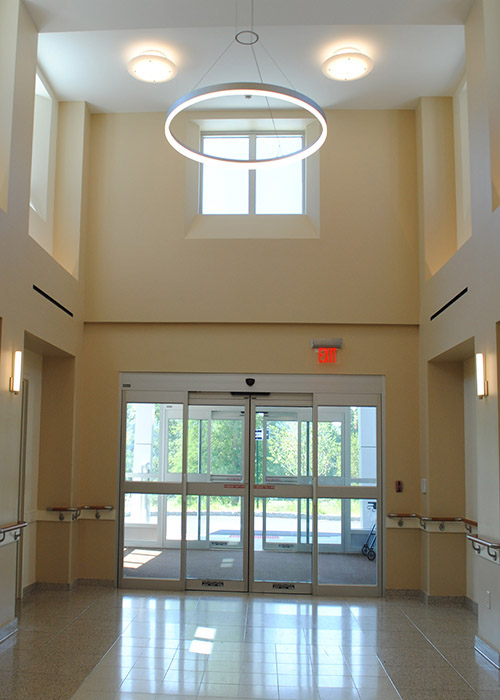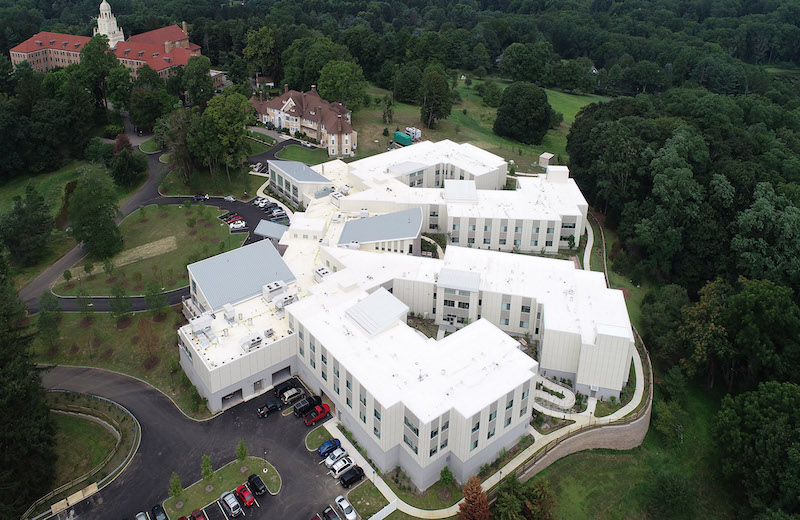Built in 1931, the original building became outdated, costly to operate and renovate, and not in compliance with current building codes and ADA standards. The new building consists of 178 factory-made modules making up 85,000 square feet of the 165,000 three-story structure.
Fabricated by NRB, Inc. in Pennsylvania and completed by Del-Sano Contracting Corp., the entire project was finished in just 267 days. The new building functions similarly to the older one, with space for administration, formation, liturgical and community life. The building has a large chapel with devotional spaces, a hydro-therapy center, assembly and meeting rooms, a commercial kitchen, a dining room for 120 people, multi-purpose and conference rooms, and a mechanical and electrical building operation plant. Four “wings” that house 60 living and bedrooms. The top floor has 60 more bedrooms and living rooms with handicapped accessible facilities.
The non-combustible design is a structural steel post and beam assembly with light-gauge infill and pre-poured concrete floors in a composite steel deck to help achieve sound deadening and fire ratings. The customized facility was built “in-place” at NRB as a two-story structure to ensure precision fit and finish of all features and systems, resulting in a shorter site installation time and reduced on-site activity and disruption to the community. Once completed, the building was deconstructed and loaded to transporters. This process allowed the building to arrive with a majority the exterior siding installed as well as a high-level of completion on the interior, reducing site completion time significantly.

The building was designed with minimal interior columns to allow for maximum flexibility in use. Each module was designed with engineered lifting lugs for fast and simple offloading on to the foundations and a more efficient stacking process meeting exacting tolerances.
This building was designed with reduced operational and life-cycle costs, improved functionality and an enhanced quality of life in mind. The facility meets the HVAC requirements of a long-term care facility, utilizing high-efficiency water source heat pumps in each individual living space and common rooms. It includes high-efficiency, energy saving interior light fixtures with occupancy sensor controls in all rooms, low VOC paints, a reflective white EPDM roofing and large insulated windows for natural lighting. Other energy efficient elements include continuous rigid insulation on the exterior walls and roof, and sprayed insulation under the floor for a superior performing building envelope.
The building blends the right balance of architectural, structural, mechanical/electrical features, including both offsite and conventional construction methods while maintaining critical budget requirements of the project.
To learn more about modular construction, check out the latest edition of Modular Advantage Magazine.
COMPANY INFORMATION:
Modular Building Institute
944 Glenwood Station Lane, Suite 204
Charlottesville, Virginia 22901 USA
Phone: 434-296-3288
Email: communications@modular.org







